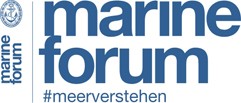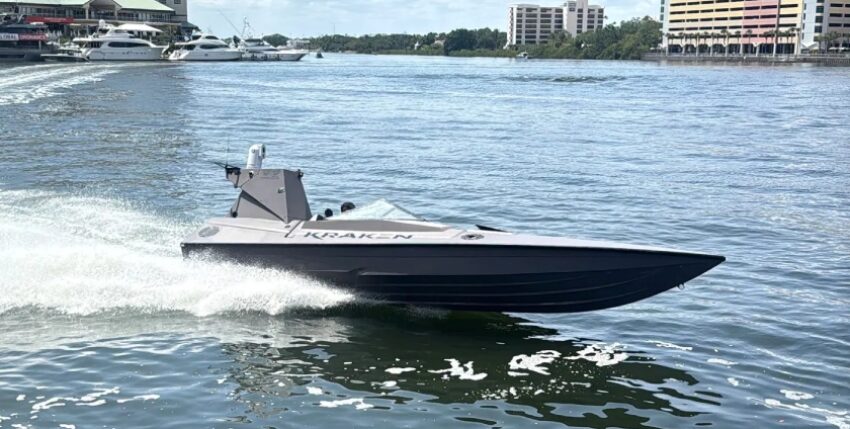More and more unmanned surface vehicles are being developed for naval use. A British company promises particular flexibility with its new model.
The British Kraken Technology Group presented the K3 Scout unmanned surface vehicle (USV) during Special Operations Forces Week in Florida at the beginning of May. The state-of-the-art vehicle is characterised by a slim, hydrodynamic design that enables particularly high efficiency and manoeuvrability in the water. The double-stepped hull reduces water resistance and increases positional stability, especially when manoeuvring. high travelling speed.
The USV is suitable for a variety of tasks, including reconnaissance and surveillance, underwater reconnaissance, surveillance of coastal and offshore facilities, logistical supply, infiltration and exfiltration of special forces or wounded as well as armed offensive purposes. The boat is designed for unmanned operations. It can be operated autonomously or remotely and is capable of travelling long distances without direct human control. Alternatively, a cockpit for a boat driver can be integrated on request. Several USVs can carry out autonomously coordinated missions as a swarm or independently of each other in order to simultaneously approach targets from different directions.
The modular and scalable watercraft is available in four sizes and can be equipped with a versatile payload combination. With the exception of the sensors, this is carried internally in two configurable chambers. All variants have a 30-day operational endurance.
K3 Scout is available in several variants. The Light model is 5.5 metres long with a maximum displacement of 1500 kilograms and a draught of 0.35 metres. The propulsion system consists of an inboard diesel engine with water jet propulsion. The maximum speed is 40 knots; at a cruising speed of 25 knots, the operational range is 500 nautical miles. The tank capacity is 500 kilograms.
In the 8.4 metre long medium version, the boat has a displacement of 8,200 kilograms and a payload of 2,500 kilograms including 600 kilograms with a draught of 0.8 metres. The inboard diesel engine is coupled with a sterndrive. The maximum speed is 55 knots, the range 650 nautical miles.
The twelve metre long Heavy version displaces up to 6000 kilograms. The use of two inboard diesel engines and a Z-drive enables a speed of 55 knots and a range of 1000 nautical miles at a cruising speed of 25 knots.
Finally, the 18.6 metre long Max variant, which is still under development, has a displacement of 30,000 kilograms including a payload of 10,000 kilograms. The range is 2000 nautical miles.
Equipment options
The basic equipment of all variants includes four electro-optical cameras with a 360-degree angle of coverage, radar and the GPS-based navigation system. The communication equipment includes satellite communication and various communication systems.
High-resolution camera systems, infrared sensors and acoustic probes can be added as an option. For applications where access to GPS is disrupted or interrupted, the HaloNav system from AV can be used. Based on a combination of sensors, cameras and star navigation as well as inertial navigation, the HaloNav system replaces a situation picture and thus enables reliable autonomous navigation with a maximum deviation of 100 metres.
Defensive and offensive electronic warfare systems as well as light missiles and kamikaze drones are among the other options available. Combat missions can be carried out against unmanned air and sea targets as well as warships. An on-board visual ship register is used to recognise enemy sea targets.
According to the manufacturer, series production of the K3 Scout has already begun at two sites in England. An unnamed European NATO partner has already placed a procurement order. The first delivery will take place in May 2025, explained Alec Clark, Technical Director of AV, during SOF Week. More than 100 units are to be produced by the end of the year.










